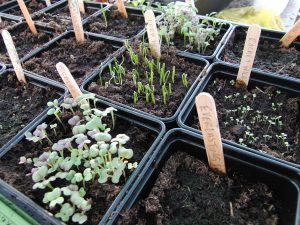
The magic of seeds never fails to bring a smile to my face. What could be more exciting and wonderful than watching a dried-up speck start to sprout and root and begin its life as a plant? It’s a process I can watch and enjoy again and again. It’s simple, it’s nature at her very best and it is truly magic. Germination is a wonder of nature. It happens all around us without any effort and you can watch as our native wildflowers, sometimes called weeds start to grow. These have acclimatised to the local environment and as soon as the temperature starts to rise, the seeds in the soil start to grow. Those growing in the wrong place can be gently hoed at the soil surface. But leave some for the wildlife. Our early emerging pollinators need the nectar and pollen and many of these plants are larval food for the butterflies and moths that we revere, not to mention the seedheads that feed the seed eating birds. Everything in nature plays its part, so go easy on the ‘weeding’, and let the wild things grow.
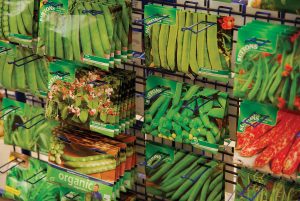
But there are also all sorts of other self-seeding plantlets coming up around the garden. Many of our garden plants will generate several generations of offspring in the soil around them and also in the paths and gravel of our gardens. Look out for seedlings of alchemilla, lungwort, verbena, hellebores, borage, honesty, foxgloves, viper’s bugloss, pot marigolds and poppies. These are plants for free and will help soften your borders and fill them with wonder. If they are growing somewhere inconvenient then gently dig them up, pot them up and share them, or plant them somewhere else.
Saving money in the garden
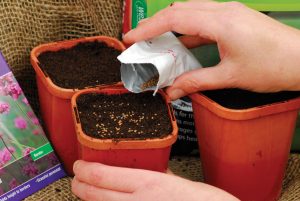
Apart from cuttings, which can be pretty much free, growing from seed is the most cost-effective way to grow plants for your garden and if you are able to save some of your own seeds from your garden, it can be even less costly. Whether that is flowers, herbs or vegetables, all you need are some containers, some seed and cutting compost and somewhere light, bright and sheltered to sow and grow them. A few packets of seed really will fill your garden with plants galore.
Roots and shoots
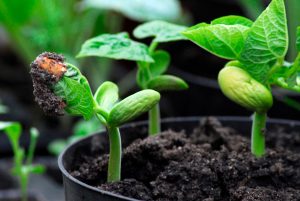
Seeds are little packages of life. Inside the seed coat is everything that the seed needs to grow and germinate. Think of it as a fertilised egg. Eggs need to be incubated in the perfect humidity, beneath a broody hen, for 21 days (for chickens) before they hatch. Seeds need a little warmth, some moisture and when they start to grow some light. Some seeds have special needs and need chilling or chitting or soaking before sowing, but most just want to grow and once they have absorbed some moisture the process will begin. You may not see any sign of life for a week or two or more. Different seeds germinate at different speeds. But soon the little parcel of life will start to swell, split and grow. At the bottom a white root will begin to grow down into the compost, while a green shoot will start to appear at the compost surface. And that’s the beginning of the story. Your tiny plant will start to take moisture and nutrients from within your compost and the first leaves will unfurl and absorb the sunlight turning it into food within the leaves. It’s magical and fascinating. Even if you have never grown from seed before have a grow. It truly is a very special process and once you’ve gained a little confidence you will quickly become addicted.
Secrets to growing from seed

There are a few tips and tricks you can use to ensure seed sowing success. Here are a few that will help you be successful.
First don’t be too hasty to get started. Seeds need warmth, so wait for spring for the best results. Check the instructions on the seed packet and opt for the middle when it recommends the best time to sow.
If sowing outside directly into the garden soil it’s a good idea to warm the soil first by placing cloches over the area you intend to sow. There’s a lovely ‘old wives’ tale’ that says if you can sit your bare bottom directly onto the soil then it is warm enough to sow your seeds. You don’t need to bare your bottom, just touch the soil with your hands to gauge its warmth, or look to see if other seeds are germinating. When the ‘weed’ seeds start to grow you know that the conditions are just perfect!
Don’t cut corners on compost. Invest in some quality seed compost, a little goes a long way. Use fresh compost and bring it into a greenhouse to warm up before sowing your seeds.
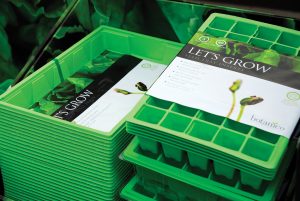
Use tepid tap water for seeds and seedlings. Water your seeds and seedlings sparingly. They need a little moisture to start growing but can easily become waterlogged especially in some peat-free composts. Err on the side of caution and keep a close eye on them. Water when the compost is drying out, it’s better to water in the morning than let them sit in soggy compost overnight.
Use modules. Once your seeds become seedlings you normally need to thin them out or prick them out. But if you sow thinly or singly into modules you reduce the work, lessen the disruption to the roots and make repotting them much easier.
Grow what you love. It’s always fun trying something new from seed, but remember to grow things that you either love to look at or love to eat. It adds more joy to growing from seed and ups the value of what you are growing.
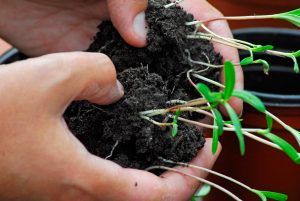
Grow organic especially when growing edibles. You will produce healthier ingredients that have a higher inherent value and are better for you, your family and your garden wildlife too.
Feed gently. Err on the side of caution when it comes to feeding seedlings. A quality seed compost has low levels of nutrients and that is exactly what you want. High levels of fertiliser will scorch your seedlings and torch the roots. When using a new brand of compost always read the instructions on the bag before you use it.










